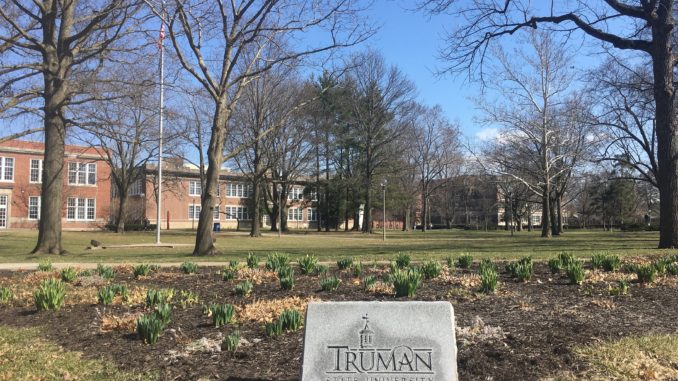
New freshman applications are currently sitting at 3,489 for fall 2019, 2,498 of which have been admitted to Truman State University.
After a 17 percent drop in new student enrollment this year, the University hired an enrollment management consultant and made recruitment and retention one of its top concerns.
While it is still early, 132 transfer students have applied, but only 51 have been accepted.
Regina Morin, vice president for enrollment management, said Truman is seeing a dramatic increase in new international freshman and transfer applications, which is not the national trend.
SEM Works has established a goal for Truman to enroll 1,100 new freshmen and 130 new transfer students for fall 2019. In other words, the goal is to keep enrollment constant in the first year. Morin said based on the number of students admitted and the number projected to still apply, Truman will reach that goal.
“This fall we hope to see traditional levels of [conversion from admitted to enrolled] and as well as traditional levels of retention, which should come in on target with SEM Works projections,” Morin wrote in an email to The Index.
Morin said Truman is making plans based on fall 2019 and fall 2020 application data, which has been close to what SEM Works projects for the University.
While Truman is aiming to remain constant next year, the University of Missouri is expecting an increase in enrollment next fall.
“Applications for next fall are up nearly 6 percent, and if the numbers hold, we’re expecting a class of approximately 5,000, indicating another healthy increase for the second consecutive year,” said Kim Humphrey, interim vice provost for enrollment management and strategic development at the University of Missouri.
Morin said most of the Missouri state schools are down a in enrollment, except for the University of Missouri. Morin attributes the lower application numbers at Truman to many factors, including the shrinking numbers of the high school graduates, a decline in the interest for liberal arts in general and its rural location discouraging Generation Z. She said most state schools are feeling the effects of the demographic shifts in the Midwest.
“The largest population growing the fastest is the Hispanic population,” Morin said. “The ACT data indicate that a Latino student will go only 21 miles on average — many will go further than that — but on average they are going to stay pretty close to home. We do not have a sizable Latino population within 21 miles of Kirksville, so I think that is an added challenge for us.”
Morin said Truman is doing many things to improve the yield of the accepted students this year.
For instance, Morin said a marketing company was working to refresh Truman’s brand in a way that will resonate with Generation Z. The Truman Access Grant was expanded to help more students pay for tuition. An additional showcase was added in April, the first weekday showcase, as well as new swag bags for alumni who tour Truman with a potential student.
“We need to try and yield an even higher percentage of students to try and land where we were last year,” Morin said. “That is what all of the colleges all across the country are doing right now.”
